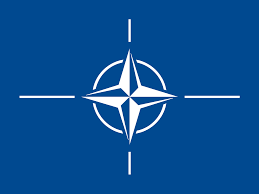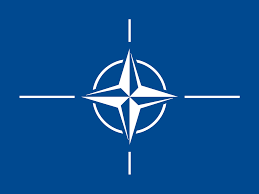
fgjhghg
The proliferation of inexpensive, highly capable Unmanned Aerial Systems (UAS) has fundamentally altered the character of modern warfare. Recent conflicts have demonstrated that the tactical and operational dominance of even advanced military forces can be challenged by swarms of commercially available or military-grade drones. This evolving threat has exposed the limitations of traditional, static air defense systems designed to counter conventional aircraft and missiles. In response, defense planners and industry leaders are rapidly developing and deploying mobile, multi-layered Counter-UAS (C-UAS) architectures, representing a critical paradigm shift in ground-based air defense necessary for survival and success on the contemporary battlefield.
This shift is not merely an upgrade of existing systems but a wholesale rethinking of force protection. The core challenge posed by UAS, particularly in coordinated swarms, is one of saturation. A large number of small, low-observable, and intelligent drones can overwhelm the sensor-to-shooter cycle of legacy air defense platforms. A mobile C-UAS architecture addresses this by integrating a suite of sensors and effectors onto maneuverable ground vehicles, allowing them to provide a protective bubble for combat formations on the move, a capability that is now considered essential for combined arms operations.
The Evolving Threat Landscape
Historically, the drone threat was characterized by large, high-altitude, long-endurance (HALE) platforms like the MQ-1 Predator or MQ-9 Reaper. These were high-value assets, relatively few in number, and could be targeted by conventional air defense systems. The last decade, however, has witnessed a democratization of aerial warfare. The conflicts in Syria, Nagorno-Karabakh, and most notably Ukraine, have showcased the devastating effectiveness of small, low-cost UAS used for reconnaissance, direct attack (as loitering munitions), and electronic warfare. The concept of the ‘swarm’—a group of interconnected drones operating cooperatively to achieve a single objective—represents the apex of this threat. Swarms can use their numbers to find gaps in sensor coverage, sacrifice individual units to deplete expensive interceptor missiles, and execute complex, multi-axis attacks that are nearly impossible for a single air defense system to counter effectively.
The Strategic Imperative for Mobility and Layering
Static, fixed-site C-UAS systems remain vital for protecting critical infrastructure such as airbases, command centers, and logistical hubs. However, they are insufficient for protecting maneuver forces. An armored brigade on the advance or a logistics convoy resupplying frontline units cannot operate under a fixed defensive umbrella. The requirement is for a C-UAS capability that is as mobile as the forces it is assigned to protect. This has driven the development of systems mounted on platforms ranging from light tactical vehicles like the JLTV to heavy armored vehicles like the Stryker or Bradley. A mobile architecture is built on the principle of layered defense, integrating multiple detection and engagement methods to create a resilient ‘system of systems.’ This ensures that if one layer is penetrated or fails, another is in place to engage the threat, increasing the probability of a successful intercept against a complex swarm attack.
Key Components of a Mobile C-UAS Architecture
The effectiveness of a mobile C-UAS platform is determined by its ability to execute the ‘kill chain’—detect, track, identify, and neutralize—while on the move. This requires a sophisticated integration of several key technologies. Detection is typically achieved through a combination of compact, high-performance radars (such as AESA arrays), passive radio frequency (RF) sensors that listen for drone control signals, and electro-optical/infrared (EO/IR) cameras for visual confirmation. Once a potential threat is detected, advanced command and control (C2) software, often leveraging artificial intelligence and machine learning, is used to classify the object, distinguish it from friendly forces or non-threatening clutter, and prioritize targets within a swarm. The final step is neutralization, which involves a mix of ‘soft kill’ and ‘hard kill’ effectors. Soft-kill systems, such as RF jammers and GPS spoofers, disrupt the drone’s command link or navigation, forcing it to crash or return to its operator. Hard-kill systems physically destroy the target and include kinetic options like cannons firing programmable airburst munitions and small, guided missiles. Increasingly, the focus is shifting to Directed Energy Weapons (DEW), such as high-energy lasers (HEL) and high-power microwaves (HPM). DEW offers significant advantages for mobile platforms, including a deep magazine limited only by power generation and a very low cost-per-shot, making them ideal for countering low-cost drone swarms.
Future Scenarios and Integration Challenges
Looking ahead, the evolution of mobile C-UAS will focus on greater autonomy, network integration, and effector diversity. The ultimate goal is to create a fully networked battlespace where every vehicle can contribute sensor data to a common operating picture, and the optimal effector—whether it be a laser on one vehicle or a missile on another—is automatically cued to engage the most pressing threat. This level of integration presents significant technical and doctrinal challenges, including ensuring interoperability between systems from different manufacturers and across allied nations. Future scenarios may involve dedicated robotic C-UAS vehicles that can operate semi-autonomously to screen a formation’s flanks or scout ahead. The central challenge for defense establishments will be to maintain technological overmatch in a domain where the offensive threat is evolving at the pace of commercial innovation. Investment in open-architecture C2 systems and a flexible mix of kinetic and non-kinetic effectors will be paramount.
In conclusion, the rise of the drone swarm has irrevocably changed the requirements for ground-based air defense. The response is a decisive move away from static, monolithic systems toward dynamic, networked, and mobile C-UAS architectures. These systems are not just a new piece of equipment but a foundational enabler for modern ground combat, ensuring that forces can maneuver and fight without facing unacceptable attrition from the sky. The speed and success of their development and integration will be a key determinant of military effectiveness in the conflicts of tomorrow.
Source

